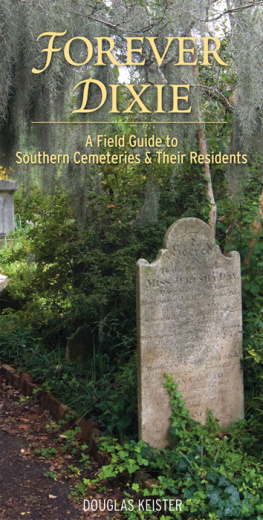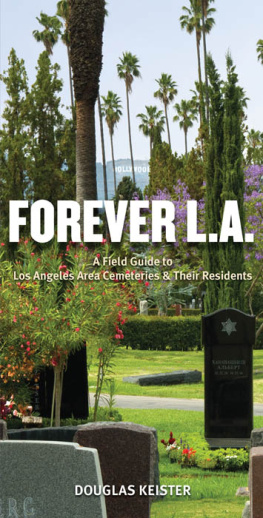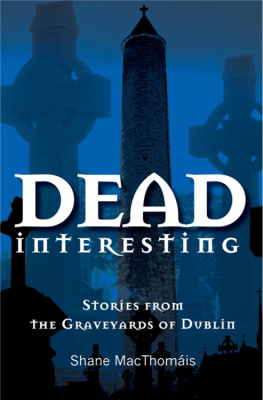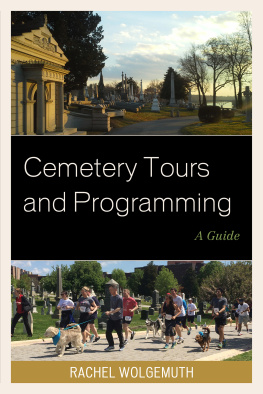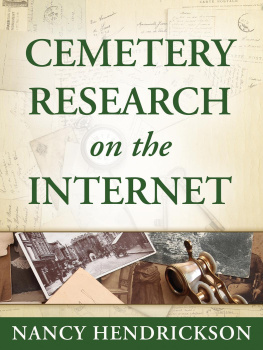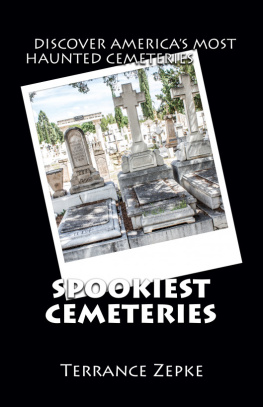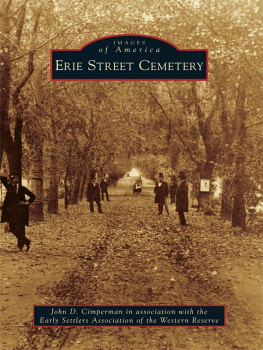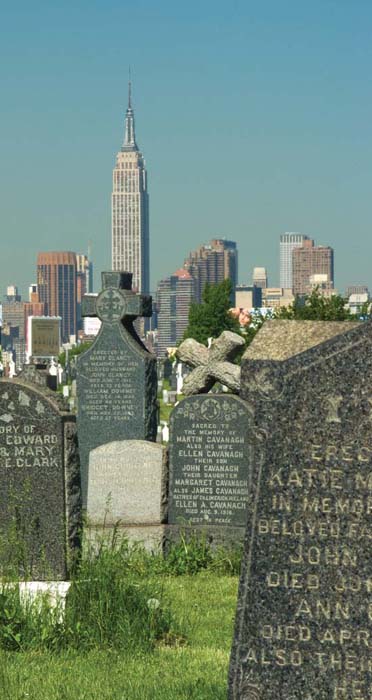Stories in Stone New York
A Field Guide to New York City Area Cemeteries & their Residents
Douglas Keister

Stories in Stone New York
A Field Guide to New York City Area Cemeteries & their Residents
Digital Edition 1.0
Text 2011 Douglas Keister
Photographs 2011 Douglas Keister
All rights reserved. No part of this book may be reproduced by any means whatsoever without written permission from the publisher, except brief portions quoted for purpose of review.
Gibbs Smith
P.O. Box 667
Layton, Utah 84041
Orders: 1.800.835.4993
www.gibbs-smith.com
ISBN: 978-1-4236-2103-4
To Sandyfriend, wife, inspiration and queen of the boneyard buddies. And to those who preserve the past to better the future. DK
About New York
New York. The Big Apple. The city that never sleeps. The Naked City. Grand Central City. Gotham. Millions of people call New York City home. For millions more, its their permanent home. Each year, some 60,000 New Yorkers reach the end of their personal line. Death. Its the price we pay for life. No one escapes. Now what? About a quarter of expired New Yorkers are cremated. The rest wind up in mausoleums or in the ground.
When New Amsterdam was founded, most of the dead were buried in churchyards that surrounded the early churches. These churchyards, known as Gods Acres, also served as mini-parks. They were often used as gathering places for farmers markets and social activities. But as the city expanded, the wee churchyards rapidly filled up. There was a certain tyranny of the dead: they had much of the good property and they werent selling or moving. Responding to a looming burial crunch, a group of forward-looking citizens formed a committee that established Green-Wood Cemetery in Brooklyn as a vast landscaped burial ground. At the time, Green-Wood was called a rural cemetery since it was located out of town. Other communities followed suit and, one after another, large rural cemeteries were developed in outlying areas. As the decades ticked on, the rural cemeteries as well as the smaller graveyards and churchyards were gradually surrounded by the burgeoning metropolis. Today, these cemeteries are oases of tranquilitya buffer of the bucolic contrasting against the cold steel and stone.
There are hundreds of cemeteries in the five New York City boroughs of Bronx, Brooklyn, Manhattan, Queens, and Staten Island. Stories in Stone New York also contains a selection of cemeteries in Westchester County, where New Yorkers started opting for burial sites at the beginning of the twentieth century. A cemetery complex was developed in an area that spanned the communities of Hawthorne and Valhalla. It was made easily accessible by a special funeral train. Westchester County also contains Sleepy Hollow Cemetery.
This guide is by no means comprehensive. It does, however, cover some of the most historic and tourist-friendly cemeteries, from the petite to the magnificent, and encourages you to go out and discover others on your own. The guide to cemetery symbolism applies to almost all the cemeteries, as does the guide to secret societies. It has often been said that you only have one chance to make a first impression. Conversely, you only have one chance to make a last impression. Explore these pages and youll find some grand, stylish, simple, and thought-provoking last impressions.
ArchitectureGoing Out in Style
Cemeteries are a vast treasure trove of art and architecture. The fact is, cemeteries are Americas most unspoiled resource of historic architecture. It would take many hours of strolling around New York City to find the number of styles of architecture that can be found in a few minutes walk in one of New Yorks historic cemeteries.
Most cemetery architecture is a mirror of the urban architecture of the time. Gothic cathedrals, Classical Revival city halls, Art Deco theaters, and rustic cast-iron garden furniture can all find their counterpart in the cemetery. And there are some styles of architecture that can be found only in cemeteries; well call this architecture uniquely funerary.
Up until the Reformation in the sixteenth century, most cemeteries consisted primarily of randomly placed headstones. Wealthy folks purchased their way into being buried within the walls and floors of their church. But a series of edicts and a slowdown of church construction during the Reformation essentially put an end to burial within the church. Moneyed types started looking outside the walls of the church to erect a suitable memorial to themselves and their families. Elaborate statuary, tombs, and monuments slowly began to find their way into formerly stark churchyards and city cemeteries. When garden and rural cemeteries with vast landscaped expanses began to be developed in the early nineteenth century, they became a new architectural frontier for Americas architects, artists, designers, and builders.
Most major architectural styles are represented in New York Citys larger historic cemeteries in the form of mausoleums, chapels, and monuments. As a rule of thumb, the older the cemetery, the more diverse the architectural styles.
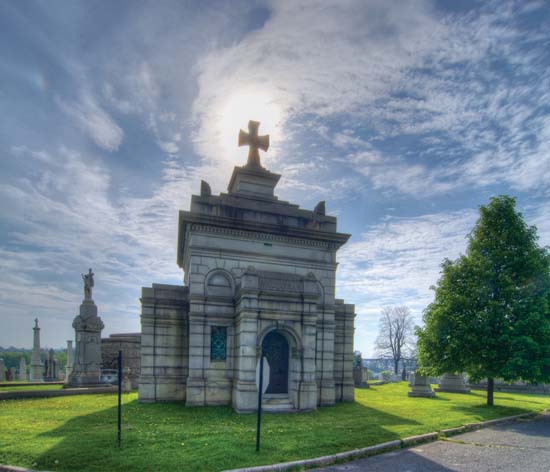
Halloran Mausoleum, Calvary Cemetery, Woodside, Queens
Architectural Styles
Tumulus and Grottos
The tumulus is one of mankinds oldest burial monuments, dating back 4,000 to 5,000 years bc. There are also a number of rock assemblages in cemeteries known as grottos. These tumulus-like monuments are miniature cave-like chapels containing small altars and religious statuary. Grottoes are often seen in large Catholic cemeteries. Most of them are an homage to the most famous grotto in the world, the Grotto of Lourdes in France.
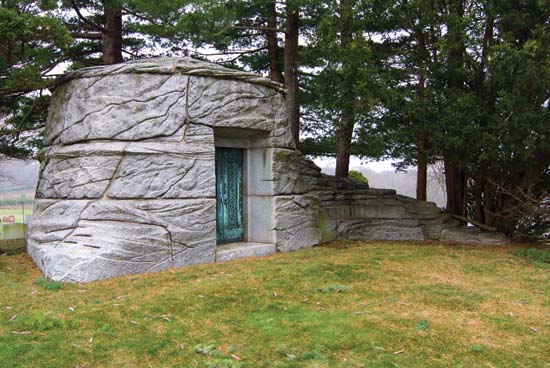
Mayer Tumulus, Kensico Cemetery, Valhalla
Egyptian Revival
While its debatable if grottos and tumuli can really be called architecture, another tomb style of antiquity, Egyptian, is perhaps the most funerary of all architecture. After all, almost all architecture in ancient Egypt had something to do with death and the afterlife.
American cemeteries have often had a schizophrenic attitude toward Egyptian Revival architecture because of its pagan roots. However, in the New York City area with its diverse population, there doesnt seem to be any particular aversion to the Egyptian Revival Style.
Almost every Egyptian Revival tomb is adorned with a pair of vulture wings sprouting from a circle (symbolizing the sun) and flanked by twin cobras (symbolizing death). Often, a pair of male sphinxes (female sphinxes are Greek) guards the entry to the tomb. Above the entry to the tomb, and usually circling the entire tomb, is an architectural element called a cavetto cornice (flared with curve). Other hallmarks of Egyptian Revival architecture are the tapered (battered) entry and hieroglyphics. Since Egyptian architecture doesnt make use of the strength of arches or tapering columns, its dimensions are quite massive. To provide strength, the walls of the Egyptian temple-style mausoleums taper in at about 70 degrees.


